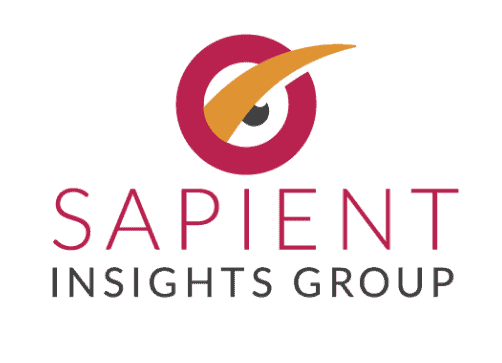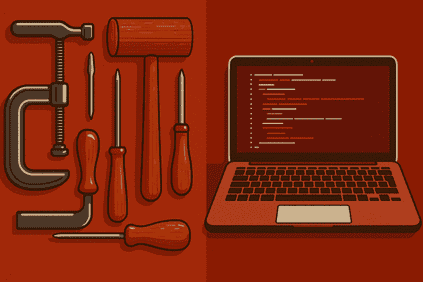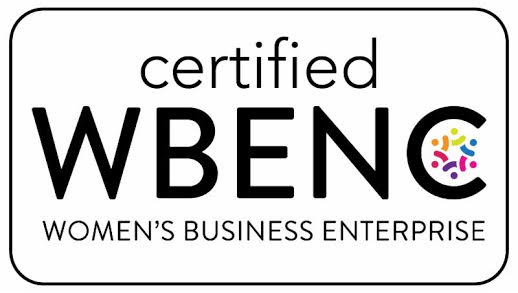The American labor market is caught in a tug-of-war between a call for skilled hands and the reality of reskilled minds, between modern solutions and ancient wisdom.
The current Administration’s plan on scaling apprenticeships is a clear nod to a very old (but field-proven) idea: learning by doing, under the guidance of someone who’s already mastered the craft. Though centered on the trades, it arrives at a moment when every industry is rethinking how it transfers knowledge, builds resilience, and invests in the next generation of talent.
From construction sites to corporate suites, the real message is this: the master-apprentice model isn’t old-fashioned… but it is overdue for a comeback.
To anchor this conversation, here’s a quick recap of some recent Federal action in this space:
- Biden’s Executive Order (2024) focused on expanding Registered Apprenticeships inside the federal workforce and encouraged agencies to incentivize them within federal contracts. It also reinstated labor-management forums to foster shared ownership and transparency.
- Trump’s Executive Order (2025) has a broader aim: It calls for the creation of 1 million new apprenticeships across the country, particularly in skilled trades and essential industries. This EO urges a private-sector-led response to close persistent skills gaps and rebuild America’s manufacturing and industrial foundation.
Each executive order offered a different approach and areas of focus, but both reflect a shared belief: traditional education and training models are no longer enough to keep pace with what the economy demands.
The solutions may look different, but the challenge is universal.
We tend to associate apprenticeships with electricians, machinists, and plumbers. But here’s the question more HR leaders are beginning to ask: What’s the white-collar equivalent?
In the knowledge economy, we’ve borrowed from the apprenticeship model without really owning it. We have interns, analysts, coordinators… early-career roles that often come with minimal structure, informal mentorship, and a whole lot of sink-or-swim.
And as AI automates the procedural and entry-level work that once served as on-the-job training, the stakes have changed. Apprenticeship thinking is no longer optional. It may be the only viable path to preserving institutional knowledge, preparing the next generation, and creating continuity in the face of accelerating disruption.
At Sapient Insights Group, we’re seeing a convergence of factors pushing leaders to reconsider how capability is developed, transferred, and retained.
- Skills > Schools: Proof Over Pedigree
Formal degrees still hold sway in many hiring decisions, but momentum is shifting. In our most recent HR Systems Survey, only 20% of organizations reported actively using a skills management platform, down from 30% in 2022. This decline doesn’t mean skills don’t matter, but it suggests that many employers are still figuring out how to measure and mobilize them effectively.
Credentialing can be a helpful shortcut. But in a rapidly evolving economy, there’s growing interest in capability-based assessments and real-world proof of performance.
Apprenticeships offer a clear, structured way to move from “knows about” to “knows how.” And they provide one of the few mechanisms we have left to evaluate progress through doing, not just declaring. - The Urgency to Upskill (and Actually Transfer Knowledge)
According to our research, only 27% of organizations use formal change management approaches during technology transitions. That’s a red flag when it comes to building workforce resilience.
As companies chase agility, scale digital transformations, or shift business models entirely, they’re increasingly reliant on their people’s ability to adapt, and on one another’s willingness to teach.
Yet we regularly hear from HR and business leaders who are stunned by how hard it is to capture, preserve, and pass along expertise. The departure of a senior employee—especially one who’s been a “go-to” for years—often reveals little has been institutionalized. Apprenticeship frameworks could serve as a much-needed safety net. - AI is Coming for the Routine… But Not the Relational
AI use in HR has doubled year over year. But our research shows that while tools are gaining traction, most organizations are still struggling to find effective use cases.
That’s not surprising. AI can recommend training. It can summarize feedback. It can simulate onboarding. But it can’t coach judgment. It can’t adjust on the fly when someone just doesn’t get it. And it can’t model behavior the way a mentor can.
Interestingly, as generative AI becomes more embedded in talent workflows, apprenticeship-style relationships could become one of the most effective ways to train both humans and machines. Imagine a seasoned employee mentoring a junior colleague and curating the AI prompts, rules, and feedback loops that shape their joint work environment.
That’s not science fiction. That’s an apprenticeship in the age of co-bot collaboration.
From Concept to Culture: The Mindset Shift Leaders Must Make
This isn’t about launching a new L&D program. It’s about embedding a deeper mindset into how your organization works and grows.
Too often, companies invest heavily in identifying top talent, yet underinvest in helping that talent grow others. Knowledge transfer is treated as optional. Mentorship is informal. And succession planning becomes a spreadsheet exercise.
If we want to build a workforce that’s resilient – not just efficient – we need to rethink how development happens day to day.
Here’s the hard truth: just because someone is a high performer doesn’t mean they’re ready to mentor. In fact, many aren’t.
The master-apprentice model only works if the master knows how to teach.
Managers and subject matter experts need just as much development as the apprentices themselves, especially if they’re going to serve as the living bridge between institutional memory and emerging capability.
So what do they need?
- Guidance, not guesswork. Mentors need tools and frameworks for structuring learning over time. What milestones should their apprentice hit in the first 30, 60, 90 days? What does “ready” actually look like?
- Support from leadership. Mentorship must be recognized and rewarded, not squeezed into the margins of an already-packed calendar. Make it part of performance expectations, and give leaders time to do it well.
- Feedback loops. Just like apprentices need feedback, so do mentors. Provide safe channels for mentees to share what’s working (and what’s not), and help mentors iterate their approach.
- Emotional intelligence. Above all, mentors need coaching in empathy, patience, and adaptability. What made someone a star individual contributor may not make them a great teacher… but the right support can close that gap.
Scaling the Model: Organizational Implications and the Role of Change Leadership
Embracing apprenticeship thinking isn’t just a talent play, it’s a transformation strategy.
That means success hinges on more than intent. It requires:
- Culture that values transfer over hoarding. In organizations where knowledge is power, the instinct is to protect what you know. Apprenticeship cultures flip that script – power comes from sharing what you know, not guarding it.
Leaders must model this. Reward it. Build it into team charters. Make learning and teaching part of the everyday conversation. - Formal structures that don’t feel bureaucratic. You don’t need to re-create the Department of Labor’s apprenticeship standards. But you do need structure: defined learning paths, expectations for mentors and mentees, time carved out for real development, and clear ways to track progress.
Think small, repeatable rituals. Think “Monday morning walk-throughs” or “Friday feedback circles.” The form doesn’t matter. The consistency does. - Change management that’s actually managed. We’ve seen time and again in our research: organizations that use formal change management are twice as likely to achieve their goals. Yet fewer than a third are using those practices consistently.
That’s a missed opportunity, because making apprenticeship thinking stick requires more than announcement emails. It demands storytelling, behavior modeling, peer reinforcement, and leadership alignment across departments.
This is where HR’s role becomes truly strategic – not in running the program, but in shaping the culture that allows it to thrive.
Final Word: A Future That Honors (and Learns From) the Past
Apprenticeships are often seen as relics of the past. But they might just be the model that helps us build the future.
In a world moving fast – where AI accelerates decisions, skills evolve monthly, and younger workers crave purpose and clarity – the slow, deliberate transfer of mastery may be exactly what we need.
So, whether you’re in manufacturing or marketing, software or staffing, here’s the invitation:
Don’t just look for your next hire. Look for your next apprentice.
And while you’re at it, make sure your best people are ready to teach… not just perform.
Because excellence doesn’t scale by chance. It scales by design. And it sticks when one generation chooses to teach the next.
Ready to move from ideas to action?
Whether you’re looking to level-up your workforce strategy, equip managers with the skills to lead through change, or bring real traction to your transformation efforts, Sapient Insights Group is here to help.
Click here to start the conversation. Let’s build what’s next, together.
About the author:
This post is authored by Marc Moschetto, Founder and CEO of KickMotor. With decades of experience shaping the voice and strategy behind some of HR tech’s most influential brands, Marc brings a clear point of view and deep industry insight to today’s most urgent workforce conversations.


